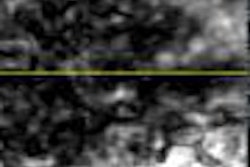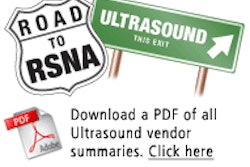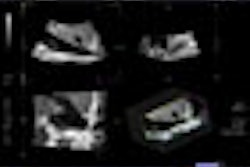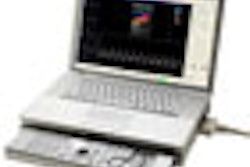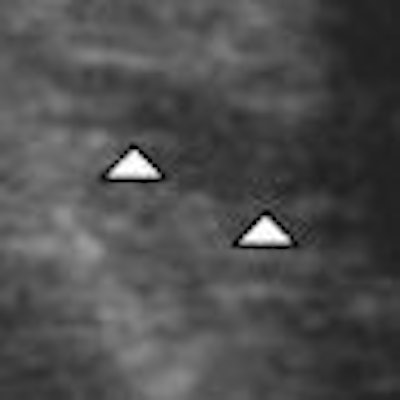
Ultrasound can accurately diagnose meniscal tears, yielding results that correlate well with MRI findings, according to research published in the American Journal of Physical Medicine & Rehabilitation.
"Ultrasonography is recommended as an initial imaging study for the diagnosis of meniscal tears in uninjured knees or when MRI is unavailable or unsuitable," wrote a research team led by Dr. Gi-young Park from the Catholic University of Daegu School of Medicine in Daegu, South Korea.
To evaluate the diagnostic value of ultrasound in meniscal tears diagnosed by MRI, the researchers prospectively evaluated 27 knees with meniscal tears and 14 knees without meniscal tears with MRI in patients who visited an outpatient rehabilitation clinic. The 22 patients included 16 females and six males, with an age range of 14 to 74 years (American Journal of Physical Medicine & Rehabilitation, January 2008, Vol. 87:1, pp. 14-20).
MRI was performed using a Magnetom Vision 1.5-tesla scanner (Siemens Healthcare, Erlangen, Germany) with a cylindrical extremity coil. Ultrasound was performed within a week after the MRI by a musculoskeletal radiologist using an HDI 5000 scanner (Philips Healthcare, Andover, MA) and a 7.5- to 15-MHz linear probe.
The radiologist was blinded to patients' clinical data, identification, and MRI results. All the ultrasound examinations included a dynamic evaluation at rest and under valgus or varus stress by an assistant. The grayscale menisci images were obtained in the longitudinal and transverse planes, and the diagnosis was determined at real-time imaging, according to the researchers.
For the purposes of the study, MRI was used as the reference standard; MRI identified 29 menisci with tears and 53 without tears. Of the meniscal tears, 22 were in the medial menisci and seven were in the lateral menisci.
Ultrasound was found to be correct in 25 (86.2%) of the 29 meniscal tears and incorrect in four menisci. As a result, ultrasound yielded 86.2% sensitivity for meniscal tears, 84.9% specificity, 85.4% accuracy, 75.8% positive predictive value, and 91.8% negative predictive value.
In addition, a case of osteochondritis dissecans was only seen on ultrasound, according to the authors.
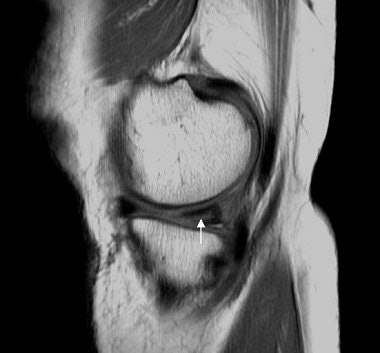 |
| Above, sagittal proton density-weighted MR image obtained through the posterior horn of the medial meniscus shows linear increased signal (arrow) extending to the inferior articular surface of the meniscus. Below, longitudinal ultrasonography obtained through the posterior horn of the medial meniscus shows a discrete hypoechoic cleft (arrowheads) extending to the tibial articular surface of the hyperechoic meniscus. Images courtesy of Dr. Gi-young Park. |
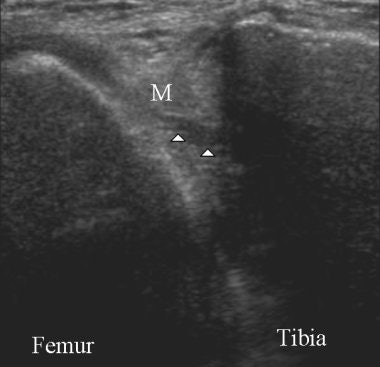 |
The researchers acknowledged several limitations to the study, including the comparison of ultrasound results only with MRI findings, the relatively small number of meniscal tears, the use of a linear probe, and the possibility of incomplete blinding of the clinical findings by the radiologist. In addition, the researchers did not assess the inter-rater variability of ultrasound diagnosis.
The authors also noted that the accuracy of sonographic assessments depends on the expertise of the examining ultrasonographer, and the results can only be generalized to appropriately trained examiners who are experienced in musculoskeletal ultrasound.
"Ultrasonography can be a useful alternative to MRI in selected cases of meniscal tears, but the clinician must be aware of its limitations," the authors concluded. "Bucket handle tear and vertical tear in the inner zone of the meniscus might be difficult to characterize by ultrasonography, and MRI allows a more accurate characterization of some intracapsular injuries that are not well characterized by ultrasonography."
By Erik L. Ridley
AuntMinnie.com staff writer
February 5, 2008
Related Reading
Comprehensive musculoskeletal US exam offers most value, January 3, 2008
PACS offers direct access to MSK specialists without alienating rads, October 18, 2007
US-guided interventional procedures boost sports medicine performance, May 3, 2007
US shows full spectrum of shoulder injuries, September 29, 2006
Focused exams suitable for some musculoskeletal US studies, March 26, 2006
Copyright © 2008 AuntMinnie.com




